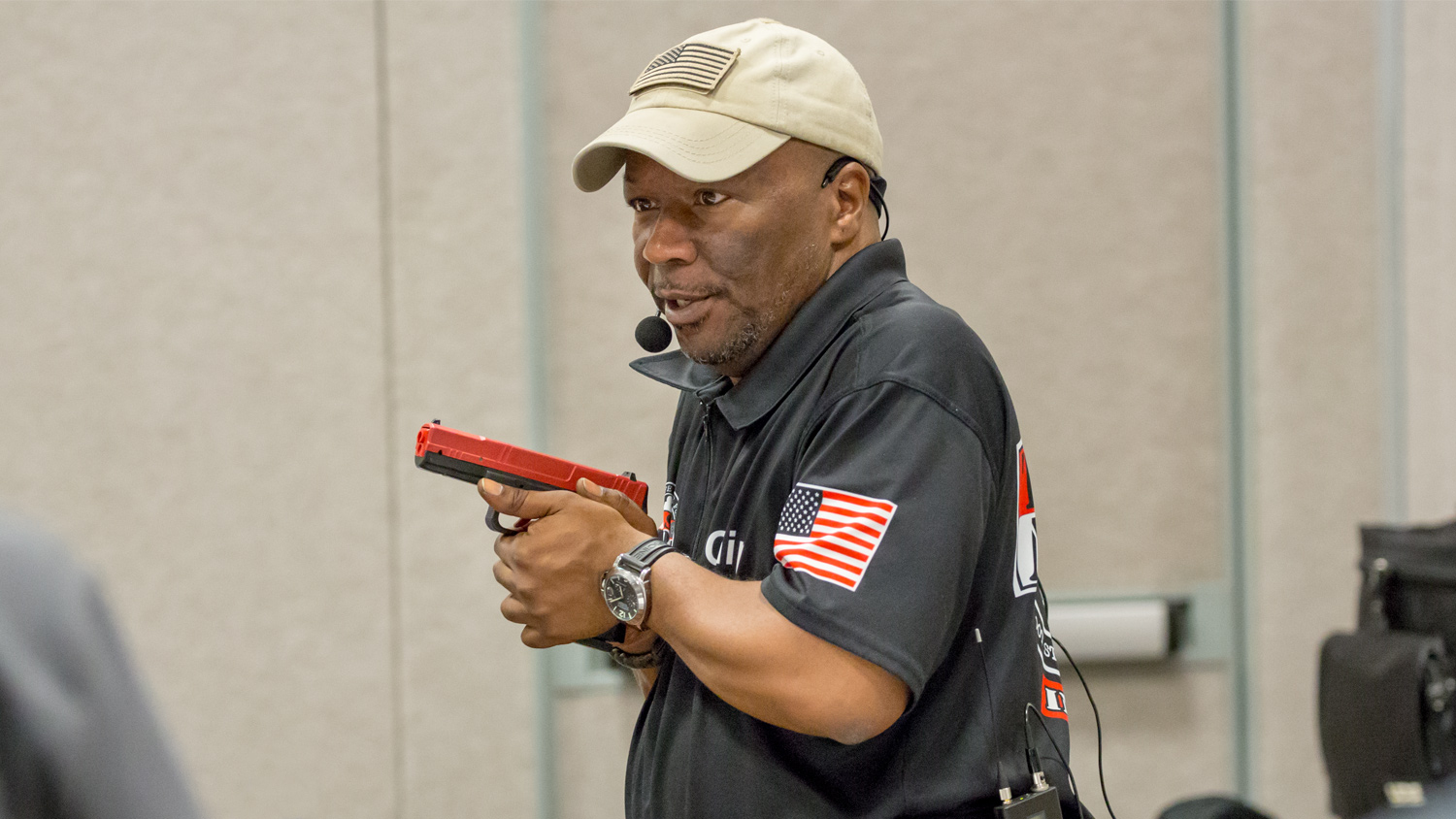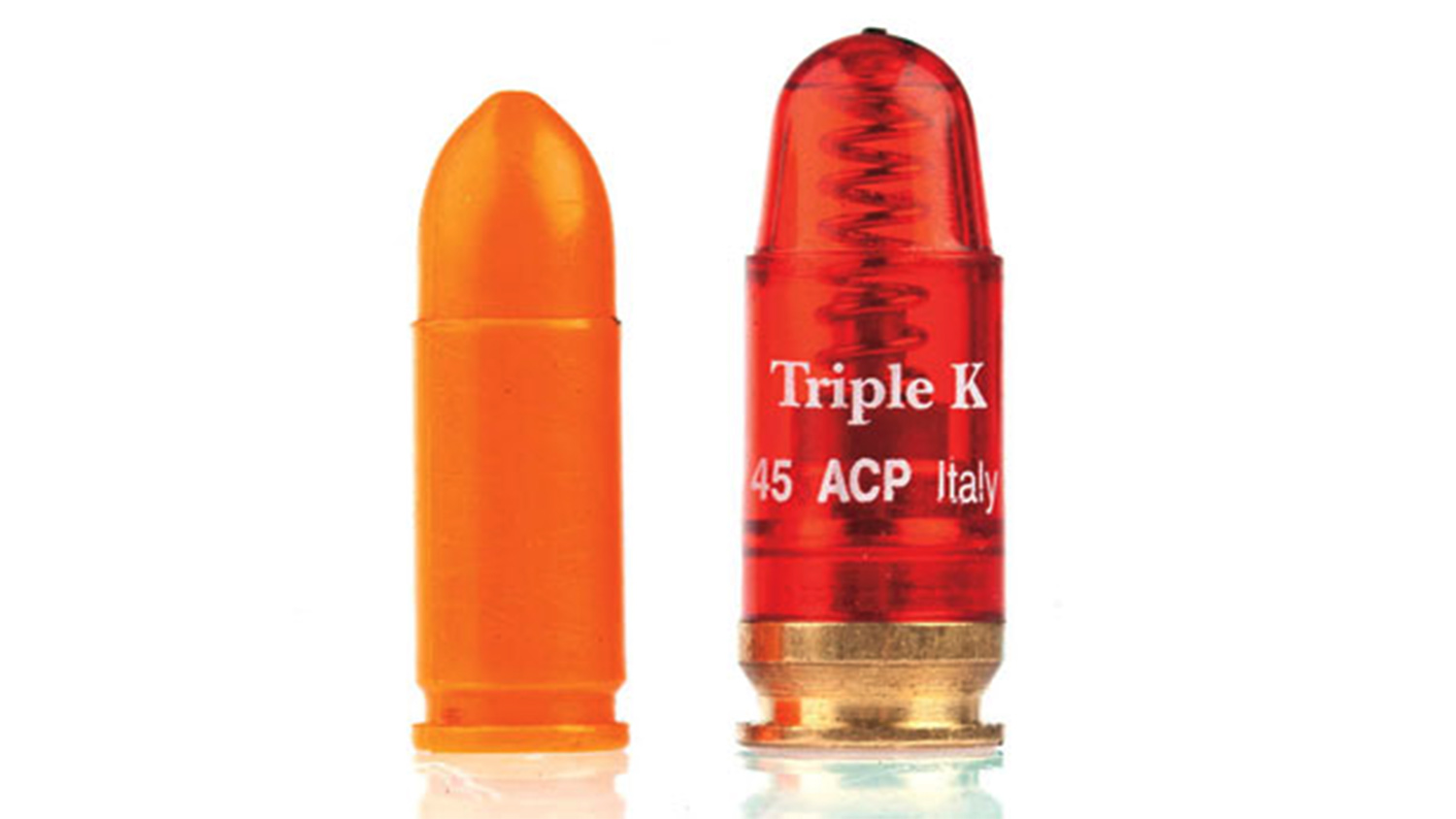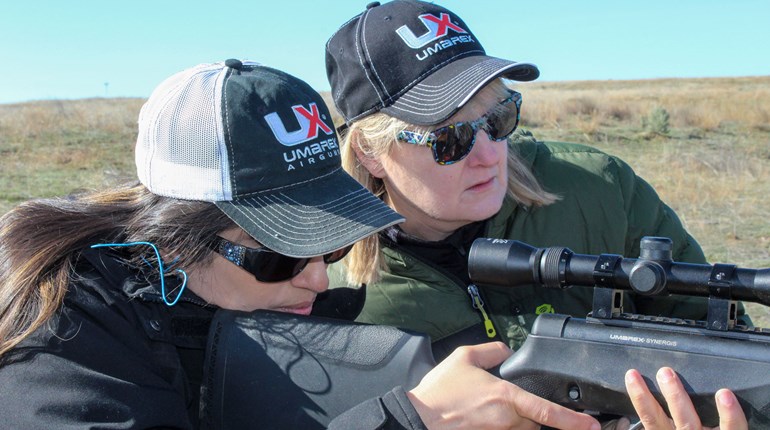
The U.S. Army Rangers say: “Train like you fight—fight like you train.”
There are probably more boring things to do than dry firing—not sure what they might be though. However, if you are serious about shooting better and getting more competitive in matches or surviving a gun fight, you should consider lots of dry firing drills. Dry firing is simply functioning your empty firearm as if it were loaded. For competitors it means aiming at a target and functioning the firearm as in competition. For the defensive shooter, it means practicing drawing, getting the empty gun up and ready for firing or actually firing at an aggressor. In other words, you do what you are expected to do in competition or in combat—but do it with an empty firearm.
First, let’s rationalize why a serious competitor or defensive shooter should dry fire. It will make you more effective! Dry firing will help you with muscle memory if you do it correctly—and correct is vital. It will help develop muscle tone, target reaction speed, and a steady hold. With handguns it will help with draw speed, presentation speed, sight alignment, trigger function, reloading drills, stoppage clearing drills, movement to targets in some competitions and even holstering. For shotgunners it will help with a correct mount, smooth gun movement, target alignment/leads, trigger control and timing.

Over the years I have found the more I dry fired the more I improved. Let’s take a strong person with bulging muscles who has not fired a rifle much and hand them a scoped up .22 at a range and ask to shoot accurately offhand. You will see that a 98-pound weakling who has been dry firing will out shoot them—always! Why, because hold, alignment, timing, trigger control, muscle memory and believe it or not, muscle tone will beat out strength and the resulting twitches. Do you think this is why the smaller and more “fragile” ladies dominate in some shooting sports over all us heavy lifters? Additionally, dry firing helps build confidence—the work at the firing line has been rehearsed during dry firing—building mental confidence and control.
If you are going to a weekend competition and simply having fun by sending bullets down range is good enough for you—then stop here. And, if that is your plan quit griping about the winners—because they are working harder than you in most cases. However, if you are tired of being fodder for the same people who every week stomp you into the ground, then read on and prepare to work. Consistent winners dry fire and most really good ones do it a lot.
Dry fire or any form of drilling whether a military drill team, tennis player (hitting against a backboard) or shooter is not a lot of fun (actually, it’s work) but the results in competition are proof that they pay off. Here are some ideas regarding dry firing:
- You can do this inside your house (you can also do it at a gun range—but folks may think you are weird).
- You can do this (inside) regardless of the weather.
- You will dry fire much more (if you work at it) than shooting live ammunition. Shooting air is cheap!
- You will develop correct techniques without match pressure (if you practice good form and function).
- Without recoil and noise you will see your errors regarding hold, trigger functioning, sighting and follow through (prepare to swear a lot).
- You can easily work to correct your errors without recoil and noise.
- You will develop correct techniques that you can analyze and correct without recoil and noise.
- You will develop that all important muscle tone and muscle memory.
- Your confidence and even mental performance will improve because most of your competitors except at the highest levels have not practiced like you have. Now you have got them where you want them!
Before we begin, here is a general rule you must follow to make this really work. You should wear all of the gear you will wear at a match when dry firing—including your hearing protection, shoes/boots, hat, vest and whatever else. The same applies if you are practicing defensive shooting. Dry firing (practicing) without your gear on is not putting you under the same conditions as in competition—you must be consistent to win and that includes dry firing—don’t skimp. Also, use the same time elements. If you are a silhouette rifle competitor for example you can do dry firing at whatever cadence you wish, but finish up with a dozen or so simulated practice matches where you take the full live fire 2 1/2 minutes. And as with live fire practice, if your accuracy and form begins to degrade consistently, then end your practice session! You do not want to practice bad form.

Ruining your gun: Dry firing a .22 rimfire without an empty case or snap cap in the chamber will ruin your firearm. The firing pin/striker will hit the edge of the empty chamber and will ding it up badly. For .22 rifles I save a bunch of my live fire brass, wipe it free of dust and debris (from the range) and chamber the fired cases into the gun. Once I have one fingered into the chamber simply raising the bolt it will cock the firing pin. Generally I will “fire” against one case for five shots then dump it. Yes I know, other guns (semi-autos) may have a problem with this but snap a rimfire firearm empty and you may ruin your gun. Also, use the fired cases from your gun since they will obviously fit the chamber.
Actually I found a guy in our town who reloads his own .22 ammo. (Yes, really). I had him “load” a couple hundred of my empty rimfire cases with a bullet and that for me works super slick as I can function them through the gun and fully eject them (on my floor with a clean blanket on it to protect the cases from dust and dirt so I don’t harm my rifle)—I can get up to 15 shots from each dummy round before the rims are ruined.
You may find the empty cases may stick in your chamber after being hammered by the firing pin. You can remove them with a cleaning rod from the muzzle end—just be real careful—this is where a .17 cal. rod comes in super handy to tap them loose. Due to the tiny .17 cal. rod in the “massive” 0.22-inch diameter barrel you just need to use care not hurt the barrel crown—you can do that, can’t you?
After your practice it would not hurt to run a dry cleaning patch through the chamber/barrel (from chamber end if possible) to remove any old primer/powder debris from the empty cases that might have got hammered loose. Mop up the receiver with a Q-tip for the same reason.
Centerfire guns, whether pistol or handgun, do not have this chamber rim damage situation. You can dry fire them empty and it is no big deal. I suspect I dry fired my Remington 700 around 10,000-15,000 rounds annually when competing (I put a lot of grease on the bolt’s locking lugs to protect head space and to prevent galling). I never had a firing pin problem. But if you are dry firing a gun with a 2-part hammer- struck firing pin like a Colt Python (for this example) you may eventually inertia-stretch the firing pin until it snaps in half and flies out of the barrel—been there, done that, got the shirt. But bolt guns like a Remington 700, ARs, M1As, etc., no sweat. Guns like the 1911 with its robust firing pin can dry fire for a 1,000 rounds with no problem—but do keep them lubed well.

Okay, this all sounds like a bunch of work—it is! However, serious competitors do it a lot and many in cowboy and combat type handgun matches work in reloading drills as well—ever seen how fast top SASS competitors reload those shotguns or watched a top combat match shooter flip out and in magazines in a pistol while running to the next target scenario?
Actually, I have seen some competitors wear out a gun’s action from putting a couple hundred thousand dry fire rounds through their guns. They win at the highest levels, too. The rest of us mere mortals need not do that to win at local and maybe (only maybe) state matches—but a couple hundred dry firing rounds the week before shooting a 40-round rifle silhouette match for example is not too much to ask if you want to win or be genuinely high hit count competitive.
Space permitting at a match during live fire you may be able to continue dry fire practice under actual range commands (ask permission from the match director and where on the firing line you can go). I have done that at matches, even national championships when I discovered I was making marksmanship errors (or nerves were getting to me)—helped me get it together for the rest of the particular match.
Okay, here we go …
Handguns
Safety first! Hand gun reactive target and defensive shooting can be effectively dry fired. With your empty (check and double check this!) handgun of your choice and after you have put any ammunition for it totally out of sight and triple checked any magazines you are ready—sort of.
A bit more regarding safety; once you have finished your dry firing session with that handgun (any gun)—put it away and do not under any circumstances load it until the next day. Violate this little rule and unconsciously and reactively you may without thinking (it happens) take the same once empty gun, shove a loaded mag in it, rack the slide and kill a part of your house—it has happened, trust me.
For reactive defensive or competition handgun shooting—get your actual match or concealed carry gear on. Face your television set with a show running. Then when the scene changes that is your signal to draw and dry fire an empty gun shot at the TV “target.” You will be amazed at all the things from sloppy draw, bad trigger function and quick shake sight alignment you will discover. It can be disheartening—but a lot better than wasting good ammo at the range. Without the noise and recoil it comes as a real shock to most folks at how lousy their presentation is. This also is a time to practice reloading drills. Your reaction time and draw speed will be improved greatly after a few days of this drill.
So when you quickly discover you suck how can you fix it? Go back to the basics of your presentation and firing, slow down and get it right before you get it fast. Now when the TV scene changes, work out the kinks. Once you get things consistently worked out it is simple to speed up. A basic plan is: Draw fast, then hit the brakes and aim and shoot deliberately. Once you get that all figured out and eliminate sloppiness you can speed up the full firing sequence.
For bullseye shooters: Put on your regular competition gear. If you shoot outdoors or indoors with a hat, glasses, different shoes, etc. wear it all during your dry firing. Do not change things up differently from how you compete.
Take a target reduced in proportional size and stick it on a wall for your indoor practice and work on your form. It really is just that simple and it will really pay off. The muscle tone (hold and grip strength) you will develop will help improve your accuracy tremendously. For timed fire (don’t put a magazine in the gun) have a person standing next to you—facing you and when you click they can rack the slide which will disturb the sight picture and simulate some recoil. Is it perfect? No, but it can help some in timed fire at least—rapid fire not so much if at all due to much quicker shot to shot timing.
Read Part 2 of “Why Dry Fire”
Photos by Jesse Snyder



































